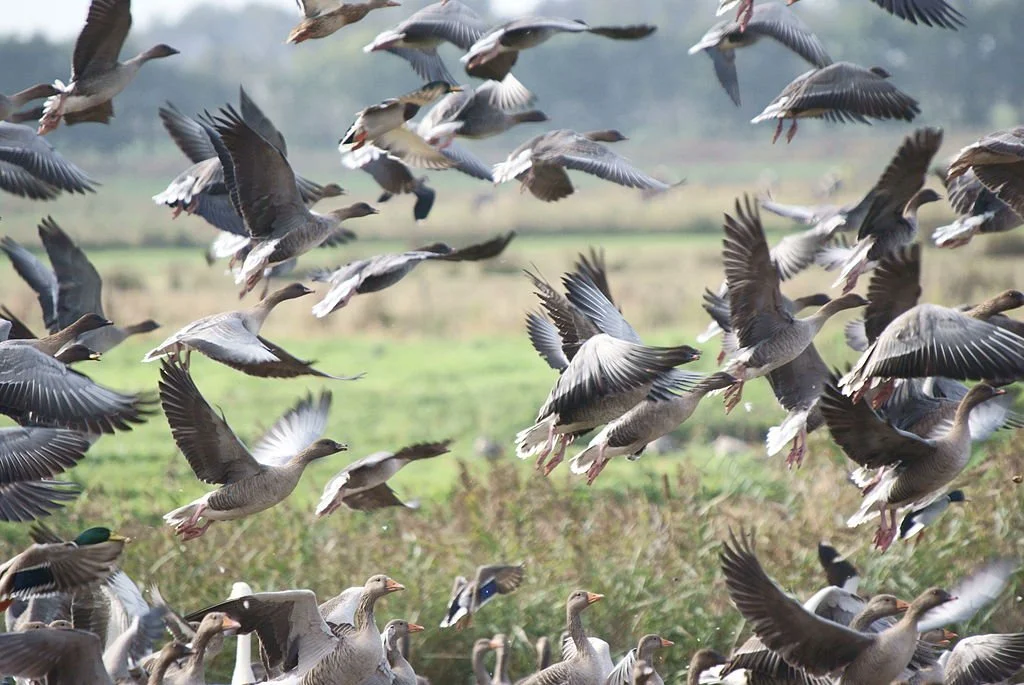Pink-footed Goose
Anser brachyrhynchus
From late September, the urgent cries of the pink-footed goose announce the season across favoured stretches of northern and eastern Britain.
Their voice is a collection of squeals and yelps, that tends to combine in a frenzied chorus, made up of hundreds or thousands of birds.
A party of pinkfeet, roving between roost and feeding ground, does not go quietly.
Many of us witness movements of geese over our heads. They’re always loud and hard to miss.
Inland in southern Britain, these are almost always made up of feral birds, that have descended from escaped or domestic stock, and have lost their habit of long-range migration.
These are typically families of Canada geese and greylags that have banded together, having spent the breeding season on a farm pond or a lake not too far away.
The sound of the pinkfeet is far more likely the sign of truly migration.
These birds won’t have taken bread out of anyone’s hand at the park. Pink-footed geese have spent the summer in Iceland and Greenland. Here they’ve been busy keeping their young safe from Arctic foxes during the breeding season.
Once they have moulted their feathers at the end of summer they cross the North Atlantic for the milder estuaries and fields of Britain.
In his wonderfully atmospheric book Wintering: A Season With Geese, Stephen Rutt describes an autumn encounter with pinkfeet, made while walking through a car park in Dumfries, his new town of residence.
It takes a second or two when you’re somewhere unfamiliar for something to make sense. I know the sound - the sound of pink-footed geese. I do not know it in this context: one bare tree, hundreds of parked cars, buildings beside me and to both sides. I stand, dumbfounded for a few seconds, confused by my ears and staring at a blank sky, the only movement a steady drift of clouds. Then, as if detaching from the bare branches of the tree, a skein of geese appears behind it, low in the sky.
Around half a million pinkfeet spend the winter with us. Their numbers are concentrated along areas of the North-west, North-east Scotland, and increasingly along the East coast of England down to the Wash and Norfolk.
They have a rather neat appearance. The pink of the feet and legs also surfaces as a sliver of colour on the otherwise dark bill.
The head is dark too, but the back has a silvery sheen, while the tail and the feathers underneath it are a clean white.
Stand among thousands of birds as they depart their roost, the air full of their cries and their wings, and it’s tempting to feel you are experiencing an unbroken pattern of natural abundance. But that’s not quite the case.
Pink-footed geese were, until recent decades, rather scarce in Britain. Protection measures here and on their breeding grounds appear to have helped, and so has the increased growing of sugar beet in Norfolk. Sweet conditions for pinkfeet.
